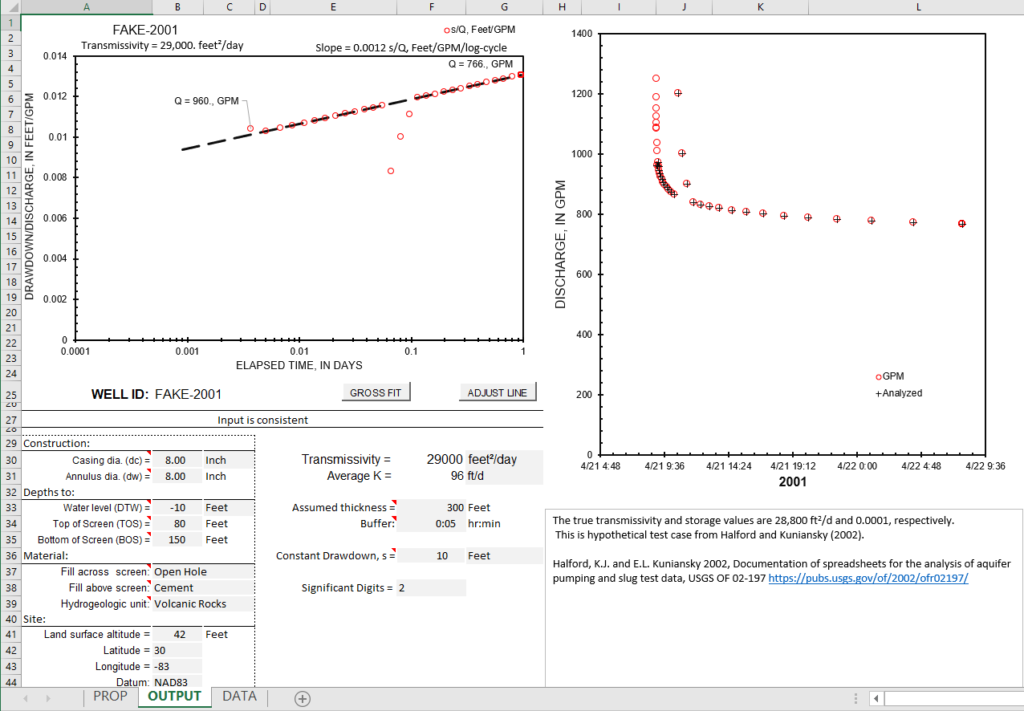Transmissivity (T) can be estimated by analyzing declining discharge rates from flowing wells and draining tunnels (Jacob and Lohman, 1952). An initial (static) water level is estimated while the well is shut-in or from other wells. Differences between initial water levels and outlet elevations of flowing wells or draining tunnels are interpreted as the drawdown (s), which is assumed constant. The aquifer test starts when the well is opened and discharge commences. Discharge rates are measured during the aquifer test and gradually decline because drawdown is constant.
Drawdown divided by discharge (s/Q) is interpreted rather than directly interpreting declining discharges (Jacob and Lohman, 1952). The group s/Q, plots as a straight line on an arithmetic axis vs. time on a logarithmic axis in a semi-log plot. Transmissivity is estimated by fitting a straight line to measured s/Q, which is inversely proportional to slope of the line as with other methods of single-well analysis (Halford and Kuniansky, 2002).
Jacob-Lohman (1952) analysis of flowing wells has been implemented in the workbook JL-DecliningFlow-2019.xlsm (Figure 1). This workbook was revised from the original workbook from Halford and Kuniansky (2002) to function with Excel 2013+. Declining discharges are plotted as a time series on a Cartesian plot for data inspection. The group s/Q is plotted vs. time on a semi-log plot for estimating transmissivity. A straight line initially is regressed to s/Q data with the “GROSS FIT” button. Fit between straight line and plotted data can be refined visually to ignore outliers with the “ADJUST LINE” button. Transmissivity and hydraulic conductivity are reported with a user defined number of significant digits.

JL-DecliningFlow-2019.xlsm and explanatory PDF can be downloaded with the following link.
References
Halford, K.J. and E.L. Kuniansky 2002, Documentation of spreadsheets for the analysis of aquifer pumping and slug test data, USGS OF 02-197 https://pubs.usgs.gov/of/2002/ofr02197/
Halford, K.J., 2016, T-COMP—A suite of programs for extracting transmissivity from MODFLOW models: U.S. Geological Survey Techniques and Methods, book 6, chap. A54, 17 p., http://dx.doi.org/10.3133/tm6A54
Jacob, C.E. and Lohman, S.W., 1952, Nonsteady flow to a well of constant drawdown in an extensive aquifer: Transaction of the American Geophysical Union, v. 33(4), 559–569 p.
Mirus, B.B., Halford, K.J., Sweetkind, D.S., and Fenelon, J.M., 2016, Testing the suitability of geologic frameworks for extrapolating hydraulic properties across regional scales, Hydrogeology Journal 24: 1133-1146. doi:10.1007/s10040-016-1375-1 https://link.springer.com/article/10.1007%2Fs10040-016-1375-1
